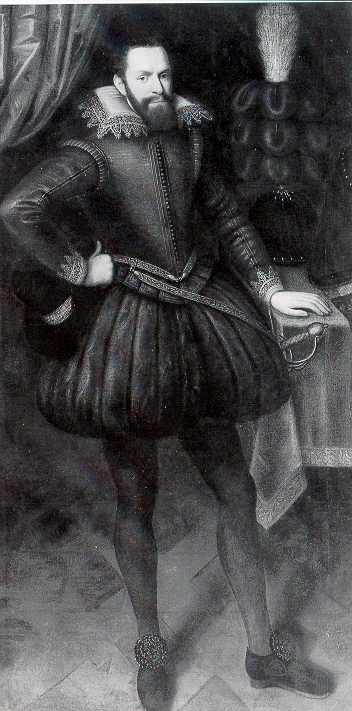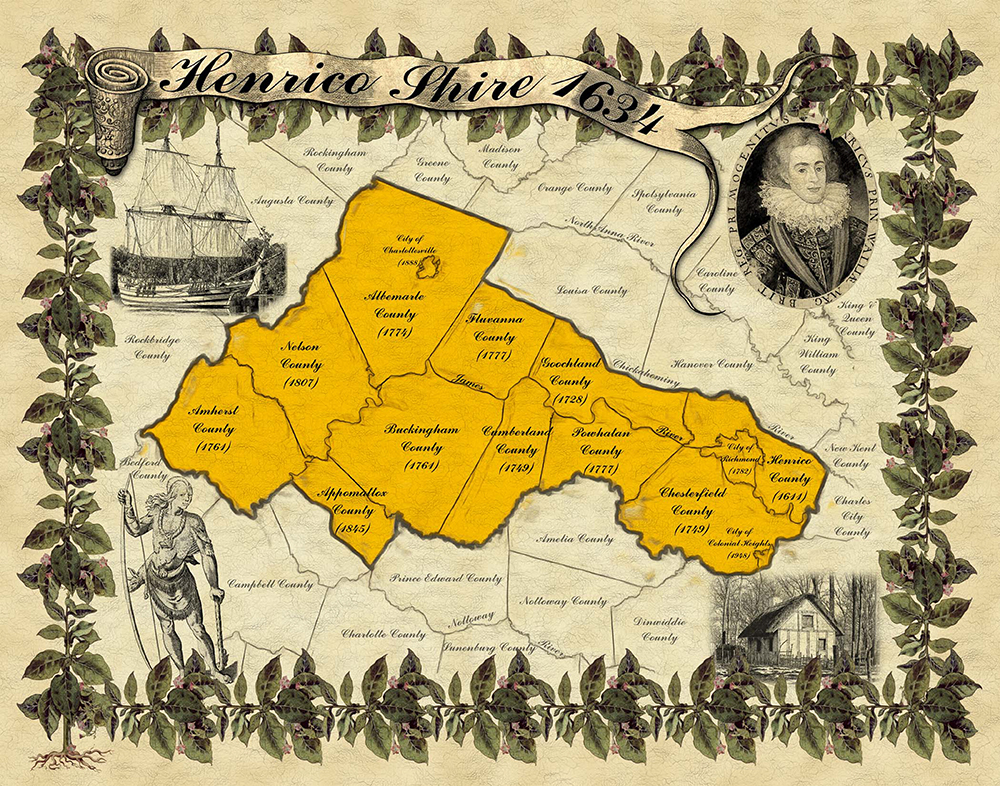
Henricus
1611, four years after Christopher Newport’s early explorations of what would become Virginia, Sir Thomas Dale left Jamestown to establish a settlement upriver. The party came to a peninsula on the north side of the river, now known as Farrar’s Island. It was here that Dale established the colony’s second settlement, “Henricus,” also referred to as the city or town of “Henrico.” The English named this colonization effort in honor of Prince Henry of Wales, son of James I.
In just four months, the town grew to a fortified settlement. Frame houses lined three streets, and the men had built a wooden church, a brick foundation for a permanent church, storehouses, watchtowers, and huts. A university was planned at the site with the aim of teaching the Virginia Indians and converting them to Christianity. This effort failed and Henricus was abandoned after ongoing conflict between the two cultures culminated in a devasting attack on Henricus on March 22, 1622.
In the years following the Virginia Indian uprising, the colonists engaged in regular attacks against the Indians, pushing them farther and farther westward.
Tobacco & Slave Labor

In 1619, while the Virginia Company was establishing a representative form of government, the first Africans arrived in the colony. By 1620 there were 32 Africans in the colony, but that number declined over the next few years due in part to diseases for which they had no immunity. The number of Africans in Virginia rose dramatically in 1628 when the captain of the ship Fortune sold 100 enslaved Africans for tobacco. Since Henrico farmer John Rolfe’s cultivation of a new strain in 1612, tobacco was the colony’s most successful cash crop. Once the tobacco from Virginia became the European favorite, its production spread from the Tidewater region to the Blue Ridge mountains. In port settlements like Henrico where export was growing, so did the desire for enslaved labor to cultivate the crop that became the basis for the “New World” economy. John Rolfe’s written accounts contain the first mention of the arrival of Africans in Virginia. Rolfe wrote to the treasurer of the Virginia Company in January 1620 that late in August 1619 the Dutch ship White Lion arrived at Point Comfort, now Fort Monroe, with “20 and odd Negroes” on board.
The year 1619 also brought reforms in the colony that led to the establishment of the first general assembly. The colony was divided into settlements, or “plantations,” one being the City of Henrico. Each plantation sent representatives to Jamestown to meet for the first representative legislature in a British colony. Henrico’s representatives to the assembly were Thomas Dowse and John Polentine.
A Royal Shire
The early rule of law in the colony was established by Sir Thomas Dale who appointed military commanders to manage civil administration and local defense. By the time of the 1622 Virginia Indian battle with Henrico, the result of increased tension between the two cultures, Dale had established five settlements between Richmond and the Eastern Shore. With increasing numbers of English arriving to these settlements and continued attacks on the Virginia Indians, the indigenous tribes were forced further west. In 1624 England assumed control from the Virginia Company and in 1634 the crown officially divided the colony into eight shires, one being Henrico.



